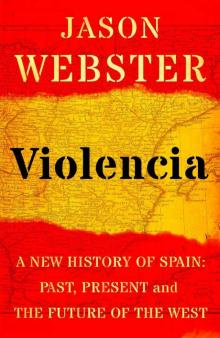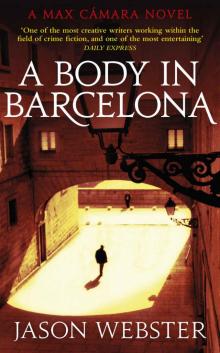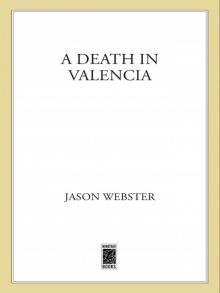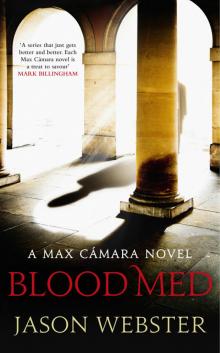- Home
- Jason Webster
Violencia Page 5
Violencia Read online
Page 5
From a local point of view, Roman victory also opened up the Peninsula to further conquest. It was slow and very painful progress, however. Like other colonisers before them, the Romans concentrated their efforts in the south and east, particularly the fertile Guadalquivir basin. Forays were made to the interior, and a small number of towns and cities were founded or developed, but the full Romanisation of these areas was less intense than on the Mediterranean coast.
Part of this was thanks to the martial spirit of the native peoples they had to deal with. The eastern areas were populated by ‘pure’ Iberians, although quite who these were is debatable. Some Roman sources referred to these people as swarthy-skinned and with curly hair; others commented on their light skin and pale eyes. Meanwhile, in the far west lived Celtic peoples. And in the middle, sandwiched between them, were the ‘Celtiberians’ – so-named by the Romans – who supposedly shared characteristics of both Iberians and Celts. Beyond the fact that they spoke a Celtic language which was written using an Iberian script, descriptions of this nebulous culture are generally vague. (Perhaps for this very reason, they play a large role in contemporary concepts of Spanish collective identity as a loosely defined community existing before the foreign invasions of historical antiquity.)
Many Roman lives were lost trying to subdue them, for the warlike Celtiberians were damned if they were going to take Roman occupation lying down. In time they became highly skilled at defeating forces much larger than their own using guerrilla and raiding tactics.
One episode from this long and bloody period stands out, defining as it does very Spanish traits of bellicosity, resistance, pride and a stubbornness of epic proportions. So emblematic has it become that it has entered the Spanish language, inspired Cervantes’s most celebrated play, given the name to a football team and not one, but three, ships of the Spanish navy. The event in question is the Siege of Numantia.
Numantia – or Numancia, as the Spanish call it – was a hill fort in eastern central Spain, not far from the town of Soria, capital of the synonymous province. Today Soria is a weird and desolate place, one of the most sparsely inhabited areas in Europe. The joke goes that when, on the few occasions that the local football team plays away against Barcelona, the entire population of Soria could fit in the Bernabéu Stadium (with seating for about ninety thousand) with room to spare. Sadly for local fans, however, the team rarely displays the doggedness shown by the Celtiberian inspiration for its name, Numancia, and tends to lag in the lower divisions.
Back in 133 BC, however, the name Numantia was on the lips of everyone in the Roman Empire.
After several humiliating defeats at the hands of the natives, the Roman Senate decided something had to be done about the Celtiberian tribes in the area. And the man they sent to do the job was none other than Scipio Africanus the Younger, the man who only a few years before had finally crushed Carthage, razed the enemy city to the ground and ploughed over it in a powerfully symbolic end to Rome’s Punic difficulties. He was the ablest commander of his time, adopted grandson of Scipio Africanus the Elder, who had brought defeat on Hannibal back in 206 BC.
Scipio’s first job when he arrived in Hispania was to beat the Roman army there into shape. A string of defeats had seriously lowered morale, and the troops languished, spending most of their time and money on prostitutes, soothsayers and the wares of local tradesmen. These undesirables were cleared out on Scipio’s orders and the legionaries were ordered on forced marches, to build fortifications which they then had to pull down and rebuild, and to dig trenches which, likewise, they were ordered to refill before digging once more. There was to be no more lounging about: strict discipline and back-breaking work were the order of the day.
Scipio’s forces were reinforced at this time by some fifteen thousand Nubians from North Africa, bringing with them archers, slingers and twelve war elephants, which could be used as mobile siege towers.
When his forces were ready, Scipio took all sixty thousand of his men and camped them near the rebel stronghold, Numantia, home to around two and a half thousand people. He avoided the shorter route, where Numantian guerrilla attacks were more likely, forcing his men to march a longer distance in an area with no sources of water. Wells were dug, but many pack animals died en route.
When they finally reached the town, Scipio had a siege wall built around it 9 kilometres long, 3 metres high and 2.5 metres thick. Cords were stretched across a nearby river with sharp blades attached, making escape – either by swimming or by boat – impossible.
The Numantians dug in their heels. The siege dragged on. Connections with friendly tribes and towns nearby were cut off. Hunger began to set in.
An embassy was sent asking for terms. Scipio’s reply was cool. When the embassy returned, the Numantians killed its members, suspecting them of having made a private deal with the Romans.
The hunger worsened. The besieged townspeople resorted to cannibalism to survive.
After thirteen months, in the summer of 133 BC, and with disease rampant in the high heat, the Numantians made their fateful decision: rather than surrender to the hated Romans, they would commit suicide. After burning the town to the ground, the majority did so. The Romans picked up the few survivors and enslaved them. On his victorious return home, Scipio paraded through the streets of Rome with around fifty of them.
Numantia itself, meanwhile, had gone down in history as an example of heroic resistance which was admired by the Romans themselves, including Pliny. Like the Jewish resistance at Masada almost two hundred years later, it spoke of epic struggle and self-sacrifice, resonating down the centuries as something to be emulated and celebrated.
Over two thousand years on, and Numancia is still celebrated in contemporary Spain, the phrase resistencia numantina commonly used to describe bloody-minded stubbornness against the odds. As another Spanish saying goes, Quien aguanta, gana – ‘He who resists, wins’. It’s an attitude which can be seen today in modern Spanish politics, where holding on to power at any cost is often the only noticeable skill of many of those in office.
As recently as the Spanish Civil War, the spirit of Numancia was invoked during the siege of the Alcázar of Toledo. Inside the ancient city’s historic castle some two thousand Franco supporters held out for almost ten weeks against everything Republican forces could throw at them, including heavy artillery and underground mines. Eventually the defenders were relieved, and the siege became a powerful symbol of resistance, Franco’s Numancia, only victorious this time. ‘Today we have won the war,’ he said as he paced around the ruins of the castle for the news cameras. And in many ways he was right, although it would take him another two and a half years to complete the job.
The Siege of Numancia was not the end of Rome’s Hispanic wars, which continued for almost another century. The Peninsula would, eventually, come under full Roman domination, at which point something of Roman influence began to penetrate the local culture. But ask modern Spaniards about the Roman period of their history, and while they will mention the remaining monuments and one or two other details, it is Numantia and the events there which dominate, which ring down through the centuries. We held out. We chose self-sacrifice over defeat.
Spain gave Rome war. In return, Rome gave Spain its name and language. But not its sense of self.
Numantia is the first example of a ‘pact of forgetting’ in Spanish history, drawing a veil over the past to create national myths about identity. While the siege of Numantia was an important episode of the Roman period, by concentrating on it at the expense of so much else that occurred, emphasis is placed on casting the invaders as mere foreigners who, despite a presence of several centuries in the country, and leaving behind a hugely significant legacy and some of the foundations of ‘Spain’, are viewed as never having fully integrated.
As we shall see, a similar pattern will play out over future invaders bringing advanced new cultures.
1 The etymology behind Hispania is unclear, with various suggestio
ns ranging from ‘land of rabbits’ or ‘far-away land’ originating from Phoenician words, to ‘last western land’ via a garbling of the Greek word ‘Hesperia’.
2 The castle – much added to over the centuries, most recently by Napoleon – still stands today.
PRISCILLIAN
One of the most interesting figures of Roman Spain was Priscillian, Bishop of Avila, the first person executed by the Church for heresy. Priscillian’s life acts as a blueprint for one of the most prominent patterns in Spanish history; the dualistic conflict between light and dark, between free-thinking and violent authority. Interestingly, he is no mere shadowy character from ancient history, but quite possibly the man whose body lies at the holiest shrine in Christian Spain to this day.
Priscillian was born to a prosperous family somewhere in western Hispania in AD 340. He received a good, ‘pagan’ education in the traditional Roman style. As part of the empire, the Peninsula was officially Christian by this time, but the culture was still very Classical and built on centuries of continued occupation. Meanwhile, the Church, an underground movement until relatively recently, was in something of a state of flux: debates raged about its central beliefs, with heated arguments over fine details of doctrine. The result was that a movement officially considered heretical for over three hundred years now became obsessed with heresy inside its own ranks.
In this context, Priscillian began preaching in the Peninsula in the 370s. His beliefs and methods were notably different from those of his contemporaries. It is not always easy to piece together clearly what they were, but one of the central planks of his message was asceticism, particularly with regard to priests, who were expected to turn their backs on the world and practise strict celibacy and vegetarianism. This was at a time when sexual ‘purity’ was encouraged among members of the clergy, but not heavily policed.1
Other aspects of Priscillian’s doctrine involved a numerical mysticism in which the number 14 was held to be particularly significant (2x7). Charismatic prophecy was also encouraged, and a link was argued between the Zodiac and parts of the body. Much of his evangelical preaching took place at night-time, when special gatherings were held in the countryside, and where – shockingly – not only did people congregate barefoot, but women were allowed to take part as well. Some of the prayers may even have been recited naked . . .
All this, not surprisingly, ruffled more conservative feathers, and Priscillian’s many detractors were quick to accuse him of Gnosticism, specifically Manichaeism, the dualistic religious movement which had grown out of Persia some hundred years before and which had vied with Christianity at one point to become the official religion of the Roman Empire. Viewing the universe as being caught in an eternal struggle between the forces of dark and light, Manichees saw a clear distinction between the flesh and the spirit, between the dark, sullied world of materiality, and the purer world represented by Christ. From what we can tell, Priscillian’s own ideas were not dissimilar (and were echoed, many centuries later, in Cathar beliefs), meaning that he came under suspicion within a Church hierarchy which, freed of its previous clandestinity, was beginning to test its strength.
But as well as enemies, Priscillian won over important supporters, including fellow Spaniards Bishops Instantius and Salvanius. And he appears to have attracted a large number of followers, particularly in the western half of the Peninsula: despite being found guilty of heresy at a special synod held at Saragossa in 380, the very next year Priscillian was named Bishop of Avila.
One of his enemies, however, was not prepared to let things stand. Ithacius was the Metropolitan Bishop of what is now Faro, on the Algarve (then known as Ossonuba), and as such, Priscillian’s superior. A contemporary source described Ithacius as ‘without any touch of holiness; rash, talkative, impudent, given to high living, much enjoying the pleasures of the stomach’. He was the polar opposite of the ascetic Priscillian, and the two men soon locked horns. Priscillian tried to get Ithacius ousted. Ithacius managed to hold on, and in return secured an order of exile against Priscillian from the Emperor Gratian, champion of ‘orthodox’ Christianity and the last Roman emperor to lead a successful campaign over the Rhine. Priscillian at this time was openly accused of Manichaeism, which had been officially banned.
Time passed. A direct appeal in Rome against the edict was eventually successful, but Priscillian’s fate became entangled in the political infighting breaking out within a Roman Empire already entering its final days.
In 383, the governor of Britain, Magnus Maximus, rebelled against Gratian, who was subsequently murdered. Sadly for Priscillian, Ithacius was close to Maximus, who was proclaimed emperor of Britain and Gaul, making Trier, in what was then the Roman province of Gallia Belgica, his capital. Ithacius had Priscillian condemned once more. Priscillian’s response was to evoke his right to take his case to the emperor himself.
When he and his entourage arrived at Trier, however, they were quickly imprisoned and tortured. Barbed hooks were used to tear at their sides, their limbs pulled from their sockets on the rack. Priscillian ‘confessed’, admitting to the heresy he was accused of, as well as practising magic and holding nocturnal gatherings with loose women. Unbridled sexual passion and sorcery were two of the greatest fears of the early Church: Priscillian had signed his own death warrant. Ithacius led the case for the prosecution.
In 385, along with five other followers, Priscillian was beheaded. Officially his crime was the practice of witchcraft, but underpinning his final condemnation was the accusation of heterodox thought, essentially of daring to interpret the scriptures in his own way. Others of his followers received lesser sentences: Bishop Instantius was exiled to the Scilly Isles (‘Sylinancis’ – the first time they are mentioned in history). To all intents and purposes, it appeared that Priscillian’s teachings had died with him.
But the story doesn’t end there. Maximus himself died only three years later and Ithacius was ousted as Bishop of Faro and sent into exile, where he died (it is not known where). Priscillian’s followers were able to take their master’s remains from Trier back to Hispania, and almost certainly to the north-western province of Galicia, where his ideas were popular. Here, for several centuries, they were revered as holy relics, and Priscillian’s final resting place turned into a shrine.
Things continued like this for some two hundred years. But eventually, by the sixth century, Priscillianism had all but disappeared. The bishop’s tomb fell into disuse.
And then, one day in the early 800s (813 or 820, depending on whom you read) a Christian hermit wandering alone in the hills of Galicia, far from the power centres of the new Muslim masters of the Peninsula, hears mysterious music and sees a shower of stars. Investigating the source of his miraculous vision, he discovers an ancient tomb lost in the undergrowth, which includes bones and parchments. He travels to tell the local bishop about his discovery. On hearing the story, Bishop Teodomiro declares the remains to be those of St James the Great, one of Christ’s closest disciples and the legendary evangeliser of Hispania. Word spreads, the tradition grows, the first pilgrims start arriving to worship at the saint’s grave, and the town which grows up around it is named after him – Santiago de Compostela, the ‘field of stars’.
Could the man venerated at the holiest site in Spanish Christendom, the headquarters of orthodoxy, actually not be St James but Priscillian, the first person to be executed by the Church for heresy? Many scholars, including Priscillian’s biographer in English, Henry Chadwick, former Dean at Christ Church College, Oxford, believe it could be. An archaeological dig in the nineteenth century beneath Santiago Cathedral revealed an old Roman mausoleum. Further investigations between 1946 and 1959 uncovered a large necropolis from the fourth and fifth centuries with tombs facing east. The belief is that they were placed there, as was customary at the time, to be close to the last resting place of a holy man. Was that holy man Priscillian? Spanish author Fernando Sánchez Dragó recounts how a local aristocrat whose widow he spoke to onc
e found a young boy from the town in tears. When asked to explain why he was crying, the boy said he had been ordered by the bishop to destroy a tombstone on which were carved the words: ‘Here lie the remains of Priscillian.’
Priscillian, a free-thinker, a mystic, a nonconformist, exiled and eventually brought to a violent end by his orthodox and authoritarian compatriot. Priscillian killed by Ithacius: Santiago the Seeker murdered by Santiago the Slayer – as we shall see, it is a pattern that plays itself out over Spanish history many times.
Perhaps needless to say, the Church is not permitting any more archaeological research at Santiago (although, interestingly, the Vatican only officially identified the bones there as belonging to St James as recently as 1884). Why should they, when millions of pilgrims visit the shrine every year? An Ithacius of today would doubtless feel more at home there than Priscillian: as a stroll past Santiago gift shops indicates, St James is good business. He is also the country’s patron saint, an honoured and much-loved face of Spanish national identity.
And playing with that can be dangerous.
1 The early Spanish Church’s views on crime and sin raise eyebrows today: sorcery brought immediate excommunication, according to a council held near Granada in the early fourth century, but a Christian woman who wilfully beat her slave to death only had to do seven years’ penance, reduced to five years if death was not intentional.
GERMAN SPAIN
VISIGOTHIC SPAIN

 Violencia
Violencia Or the Bull Kills You
Or the Bull Kills You The Killing of El Niño Jesús
The Killing of El Niño Jesús The Spy with 29 Names
The Spy with 29 Names Duende
Duende Guerra
Guerra Sacred Sierra
Sacred Sierra A Body in Barcelona: Max Cámara 5
A Body in Barcelona: Max Cámara 5 Fatal Sunset
Fatal Sunset A Death in Valencia
A Death in Valencia Blood Med
Blood Med Andalus
Andalus